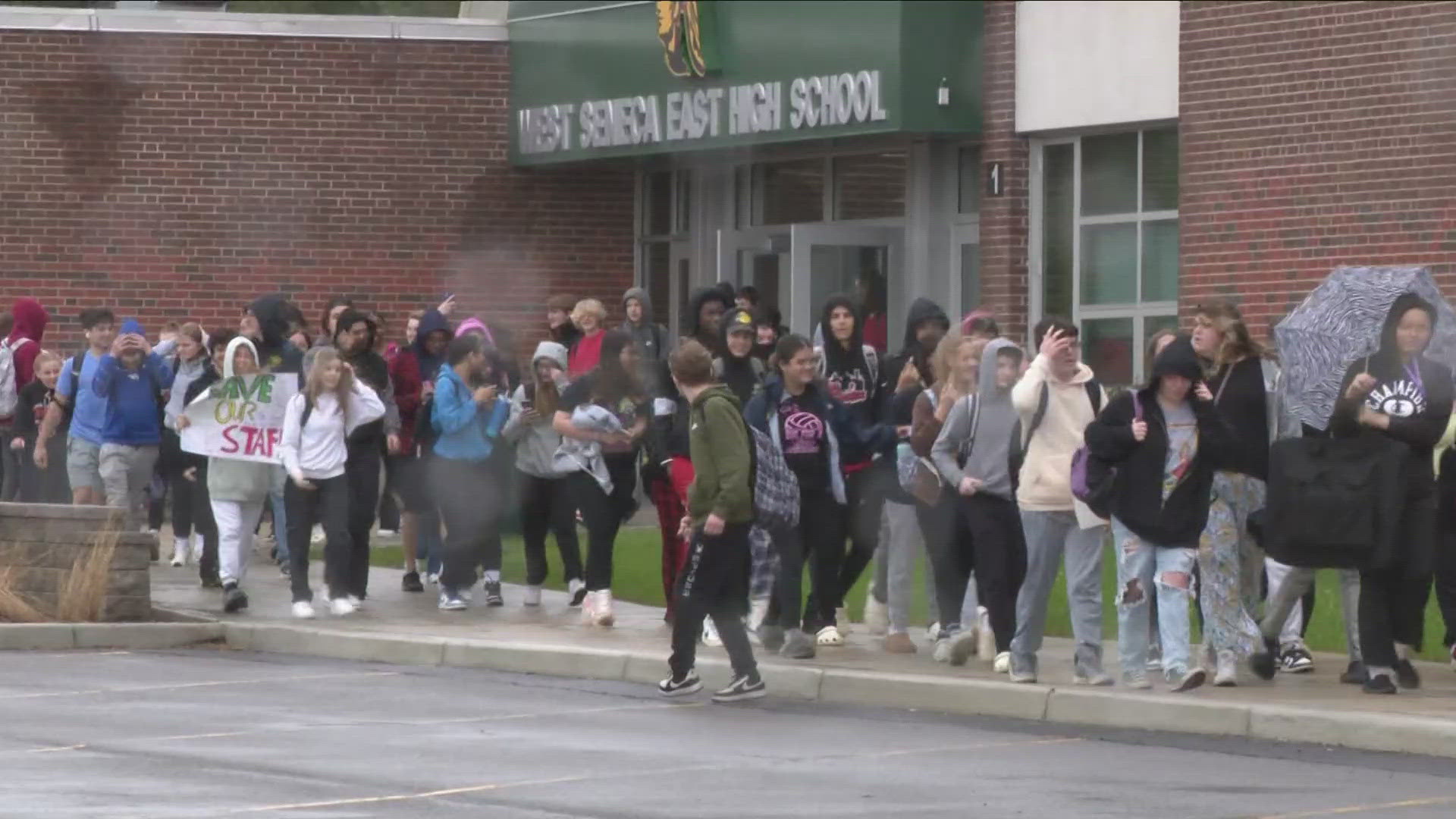HAMBURG, N.Y. — Many here in Western New York have the chance to vote Tuesday on school district budgets and school board members.
The vast majority of school budgets are expected to pass but it's been a very active budget-making process in some local districts.
Remember the scenes from March and April in Hamburg and West Seneca with sometimes loud school board meetings and as students and parents either walked out or sounded off about pending layoffs of teachers or support staff. It was 17 in Hamburg and up to 30 in West Seneca.
There were various factors for difficult, disappointing decisions by school superintendents and school boards.
In West Seneca nearly five million dollars in that federally funded pandemic relief money goes away. There were also suggested or actual reductions in state aid.
2 On Your Side asked the former Salamanca superintendent Robert Breidenstein who now serves as Executive Director of the New York State Association of Small City School Districts about choices made and spiraling consequences. That's especially the case with COVID funding which the city of Buffalo also depended heavily upon and ended up having to make significant cuts.
We asked, "Do you think some districts weren't quite sure how to use that and maybe could have used it better?"
Breidenstein responded, "History is the best teacher and over time maybe some districts made decisions that in the moment adding large numbers of staff to provide programs for students seemed perfectly reasonable at that moment in time. And with the economy crashing as it has in the past three years I think that was an outlier and a factor that no one anticipated."
He added, "Predicted mindset that when they were adding staff with the federal funds that through attrition that those temporary increases would stabilize. But I think the economy is in such dire needs that individuals who might have in other cycles retired have not."
Breidenstein also spoke of the toll which post - COVID inflation took on districts. "The spike of food, gasoline, diesel, utility costs and those unknown factors seem relatively small in a school district budget of 50, or 60 or even 100 million dollars - a one or two percent increase can really wreak havoc."
The former superintendent said school leaders did not have many options. "Unfortunately the only real measure of controlling those unknown costs are having to dip into your fixed costs and your staffing levels. No one wants to do that. "
It is expected that next year the state may seek to revise its "basic foundation" aid to schools. That is after state lawmakers actually turned back a state budget proposal this year by Governor Hochul to reduce some state funding to districts with declining enrollments.
Breidensetin, who agrees some changes are needed and who now represents some schools provided this counter argument. "I think that the best approach is to look at it based on a needs based approach not a population based census for school districts. It's too hard to predict and many school districts that I work with and speak with - in fact a couple of suburban districts in first ring suburbs outside the city of Buffalo have seen a two to two and half million dollar increase in their special education programs for students that are transferring into their school systems.
Those requirements may include more English as second language instructors, other specialized special needs instruction, and even more counselors for mental health needs for children - some of them affected by school shutdowns during the pandemic and remote learning without being in school with classmates.
He also made a point about voting for school budgets and school board members. Some local teachers unions are known to provide endorsements and significant support for some board candidates. Breidenstein said, "Typically school board elections and school votes have a lower turnout rate than municipal or local, state, or federal elections. And so special interest groups tend to sway the vote. In one first ring suburb they typically have about 2,000 voters who will come out in the school board votes out of a possible 37,000 in a particular town and a school district. So it's important that everyone get out to vote."
As expected the superintendents in Hamburg and West Seneca both turned down interview requests for this story.
RELATED VIDEO:

